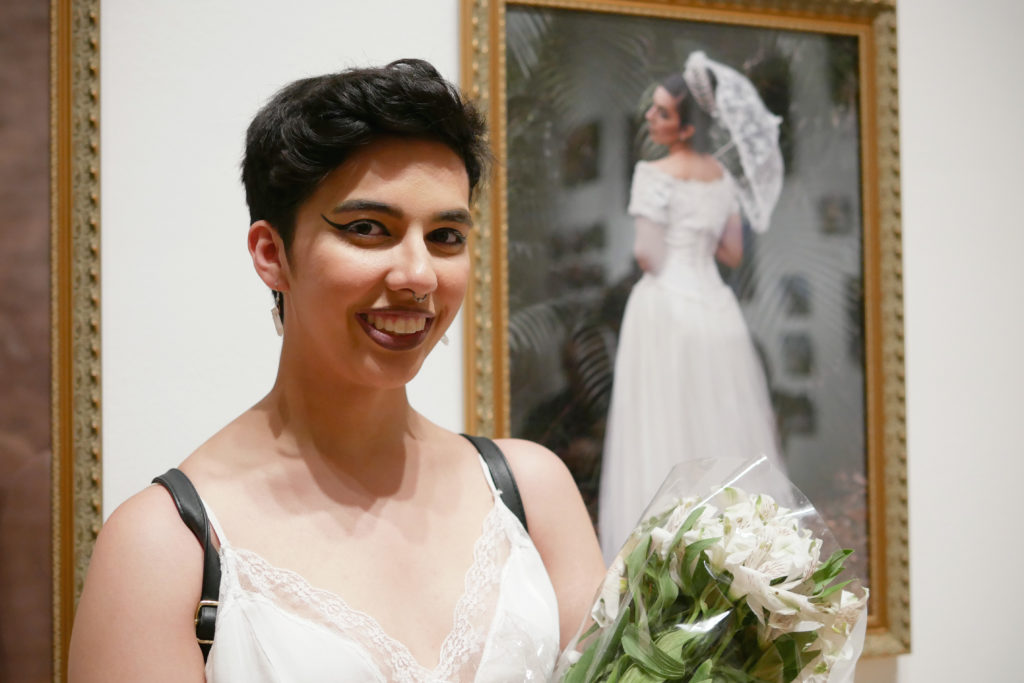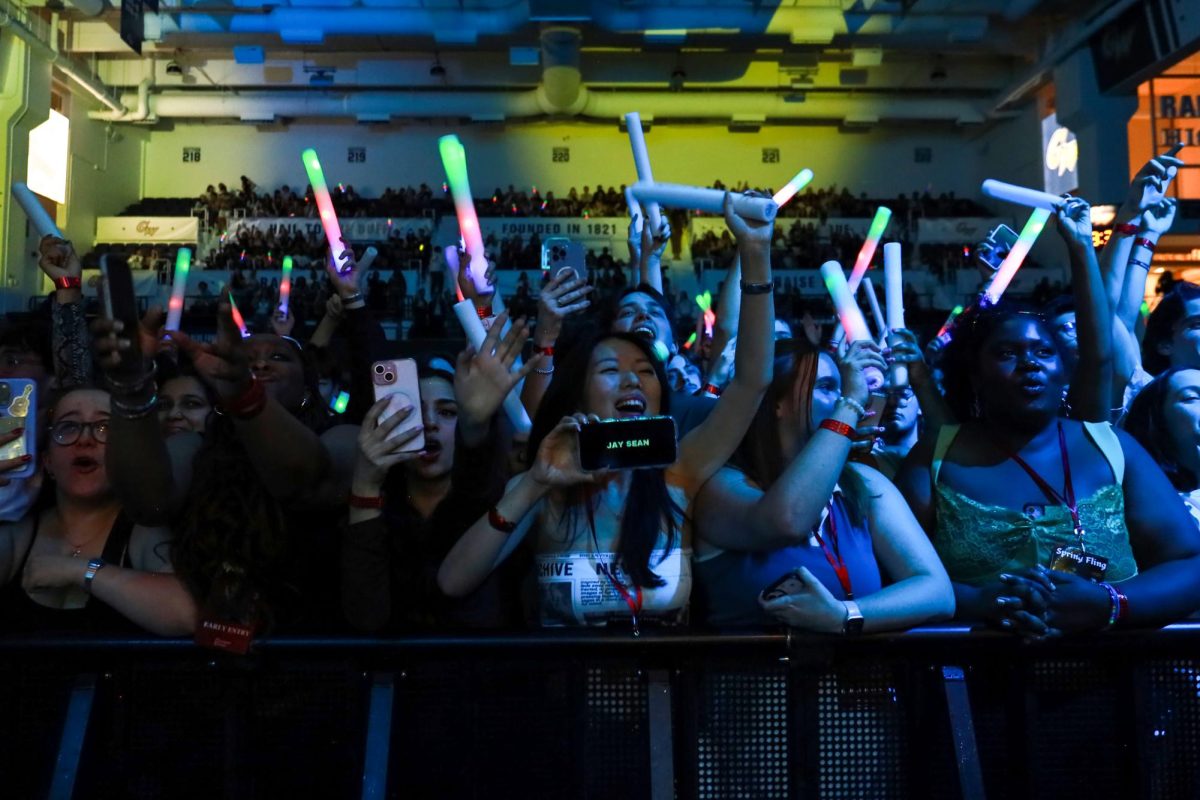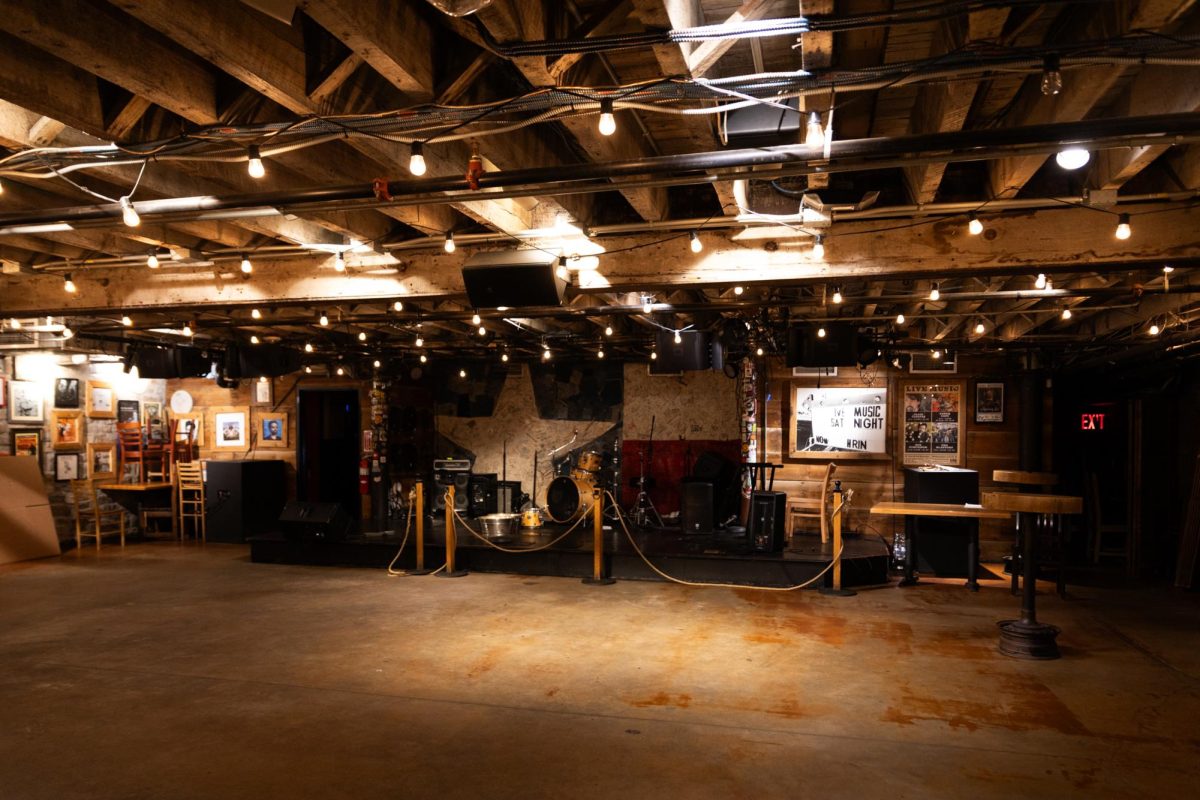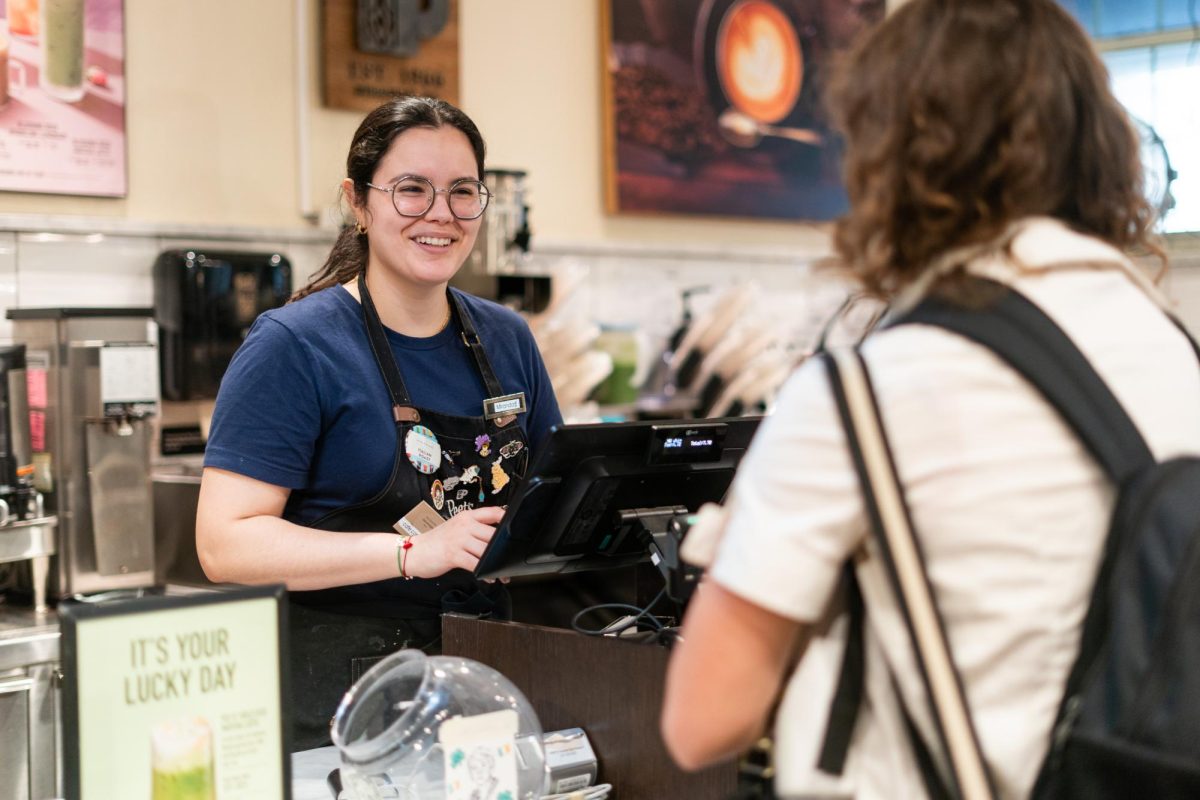Senior Ashley Llanes never had a traditional quinceanera photoshoot when she turned 15 years old.
Llanes said that when her mother asked her if she wanted a photoshoot, like her older sisters and grandmother had before her, she denied the opportunity because it “felt out of character.”
Eight years later, she decided to recreate her own quinceanera photoshoot through a series of self-portraits for her fine arts thesis project, La Quinceañera, which is displayed in the Flagg Building until May 18. Llanes said she wanted to give the traditional photoshoot a more critical lens by highlighting the cultural expectations of a quinceanera, which marks the transition from girl to woman.
“I made some aesthetic choices that are very over-the-top, that highlight the very commercial aspects of it and the very tacky and cheesy aspects of it,” Llanes said.
Llanes said she appreciates the tradition in her culture but views it as “sexist” because the celebration signifies that a “woman is now available” for a partner.
“It’s very much like white signifies purity and chastity, and I see it very much as a sacrament,” Llanes said. “They do a whole ceremony in the church. It very much aligns with femininity and vanity, and I just don’t think any of that was true to my character.”
Llanes said she is often skeptical of traditional practices. She said she is more of an “existential person” than a spiritual individual.
“One thing that is very important to me is that chastity and virginity isn’t so black and white, but it’s more of a spectrum,” Llanes said. “And I think that’s why wearing this white dress is a very big symbol towards the expectations that my parents carried out for me because they do still expect me to be a virgin, and that’s just a lot of pressure, unrealistic pressure.”
Her photography project consists of five self-portraits of Llanes wearing a dress, makeup and an updo. The photos, which are placed in “heavy and gaudy” gold-leaf frames, show Llanes posing in different styles of dresses.
“There’s one picture that I’m on this prop phone, and I’m pretending to be on it, pretending to talk to someone, and it’s just so god-awful tacky,” she said. “I also photographed myself again in the same outfit and did a transparency where I’m in the background, and it’s very, very over-the-top cheesy. It’s just making fun of the whole process.”
Another gold-leaf frame contains three separate photographs of Llanes: one of her blowing out candles, one pouring tea and one laughing in an off-the-shoulder floral dress. Llanes said the shots reflect the “hyper-feminine” element of a quinceanera.
“I had a very, very hyper-feminine upbringing,” she said. “I can remember going to a lot of tea parties as a kid, so I just thought of having a tea set, and I’m staring the camera down very deadpan and pouring tea.”
Llanes added that her Cuban American identity has a strong impact on the art she chooses to create. She said transferring from school in Miami to GW her sophomore year “hit her like a truck” because she stood out as a woman of color and as a Latina artist.
“I just really took that for granted, especially in my art,” Llanes said. “A couple semesters in, I started realizing that my aesthetic was something that very much had to do with my enculturation.”
Llanes said her art is also influenced by her Catholic upbringing. She said that while she is not spiritual, she went to Catholic school for most of her life and she tries to incorporate the aesthetic of Catholicism into her art, like her quinceanera photoshoot.
“I love that you can attribute beauty to something even though it doesn’t have to spiritually mean anything to you,” she said. “That became a huge groundbreaking thing in my work, and I started going back into archives and family photos and realizing how the heritage had an impact on me. Like I said, it hit me like a truck, and I haven’t been able to separate myself from it since.”








